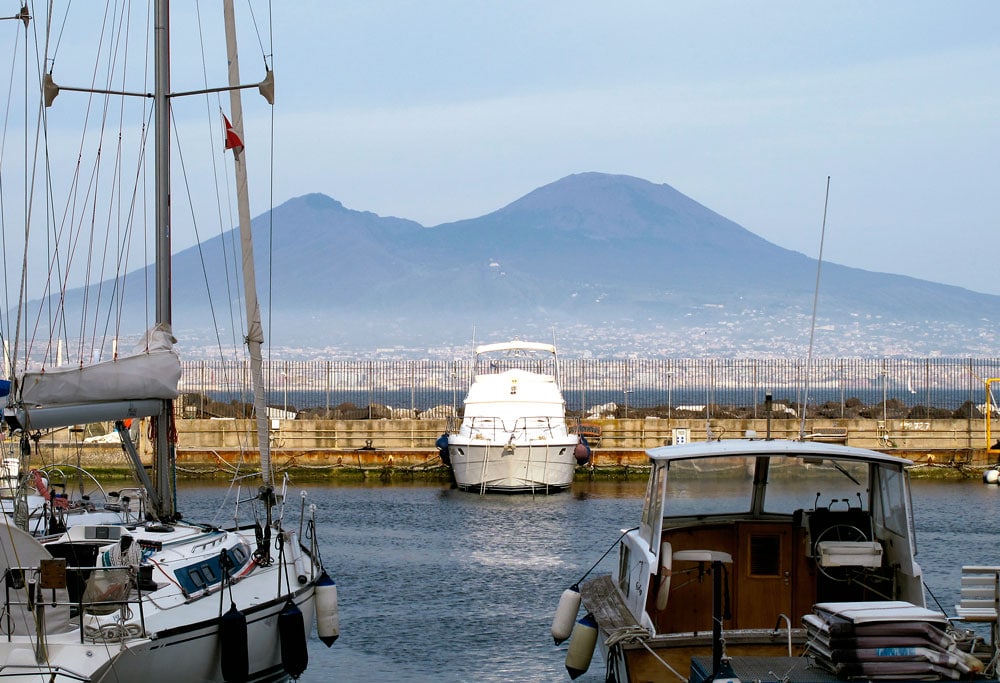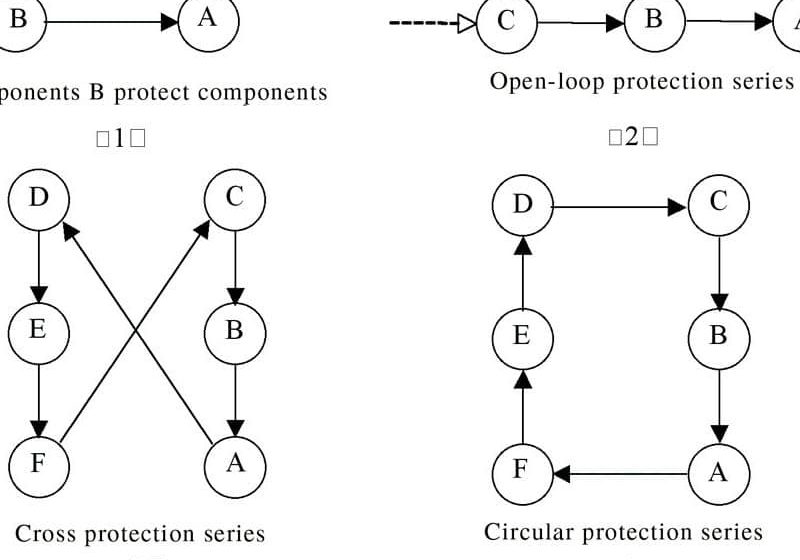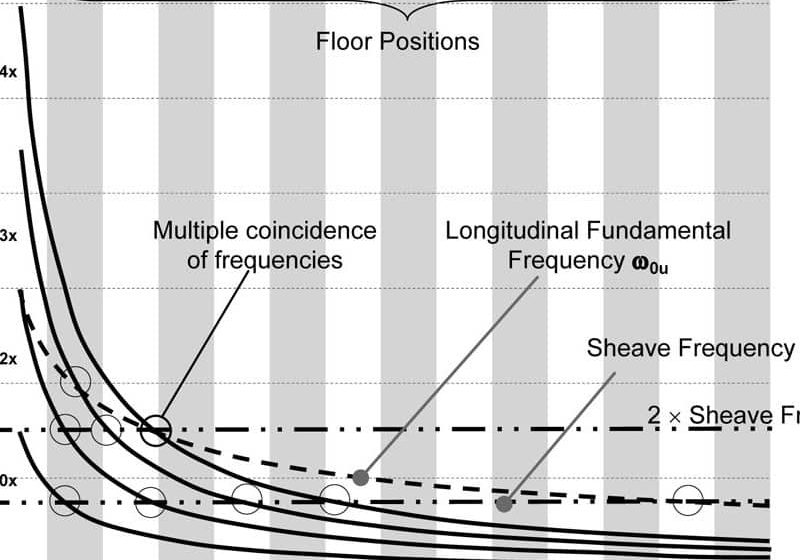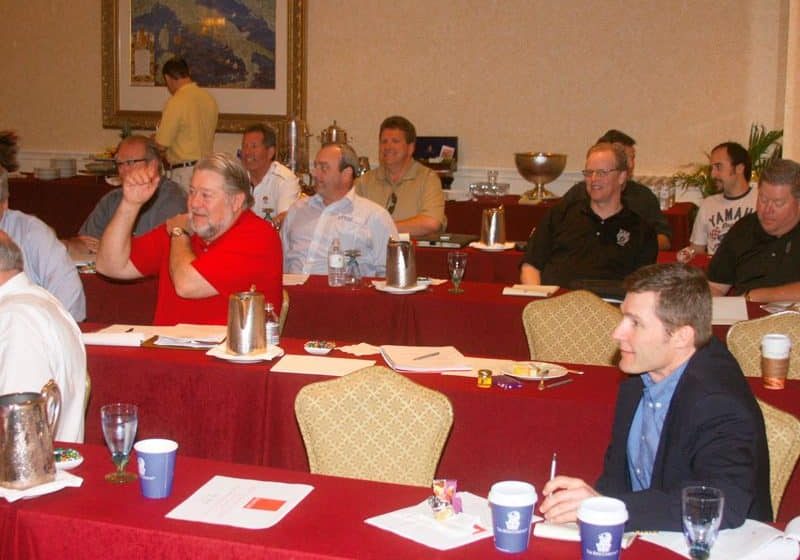An overview of the European Lift Association’s (ELA) 2011 conference held on April 7 in Italy.
The European Lift Association (ELA) held its 2011 conference at the Grand Hotel Vesuvio on the historic waterfront of Naples, Italy, on April 7. The city is historically notable as a vibrant hub city for southern Italy and for its massive volcano that towers over the bay. When looking out from the hotel conference windows, delegates were confronted with views of Castel dell’Ovo, constructed as a fortification in 1160 and a symbol of authority and safety.
The city contains many lifts and escalators. Accessibility issues and initiatives were noticeable throughout the area and included modernization projects, building refurbishments, new metro routes and accessibility initiatives. Further away from the old city, growing suburbs are being developed, with escalators and lifts serving as integral parts of the planning. Conference topics were paralleled by the city itself, with steep hills, narrow streets, various transportation systems, a large population and a mass of people working, relaxing and visiting, all in a safe, efficient and accessible way.
Topics presented at the conference included perspectives in safety, accessibility and energy efficiency, which covered the main issues of importance to the European lift industry. The conference was hosted in part by ANACAM (Italian elevator association), which helped organize and select the venue.
To begin, Michel Chartron, president of ELA, welcomed everyone to the conference and thanked Vincenzo de Martino and colleagues of ANACAM for hosting the event. Unfortunately, he had to announce that Guidalberto Guidi, president of the Associazione Nazionale Imprese Elettrotechniche ed Elettroniche (ANIE), could not attend but sent his apologies and best wishes. Obviously, there were a few notable absences due to the economic situation, but over 90 delegates were in attendance, a strong turnout for the organizers and ELA.
Chartron stated, “. . . the world is changing, and if you consider the number of skyscrapers being built in the world, you soon realize that Asia is really coming of age.” On the other hand, Europe has an important stock of five million lifts, many of which are over 20 years old and in need of modernization for safety, energy efficiency and accessibility reasons. It was, therefore, informative to learn about the Safety Norms for Existing Lifts (SNEL) initiative as implemented in Europe, particularly France.
Chartron passed along well wishes from the European Commission and, in particular, French Minister of State Gilles de Robien, who was disappointed to not be able to attend. (He wanted the delegates to know that he had just been given an extremely delicate task abroad by French President Nicolas Sarkozy.) His presentation highlighting the French Case would be given instead by Jean-Luc Detavernier and Philippe Lamalle, both of whom were well informed about the situation in France.
Detavernier delivered the first half of the French Case, explaining why this new law was introduced. A series of accidents between 2001 and 2002 galvanized both the French press and politicians into taking a much-needed look at lift safety. Of the 2,000 reported accidents, 10 were fatal. Careful research indicated that in 2003, the French lift portfolio was comprised of 450,000 units, with 60% being over 20 years old. At the same time, only 2%were undergoing modernization. It was clear to the existing authorities that the situation would worsen unless a law to make existing installations safe were initiated and encouraged.
The three phases of action that have and will be taken included:
- Phase one, which ended in 2010 and included nine key points, ensured that the lift car and landing doors are protected, appropriate safety gears are installed and the lift engineer has safe and secure access to the lift shaft and motor rooms.
- Phase two, which must be completed before July 2013, requires that drive systems and lift installations have accurate leveling, full alarm devices, appropriate glass fitted in and around the lift doors, proper warning signs on all electrical equipment, safety guards cover-ing all moving parts, and full lighting installed in all machine rooms and working areas.
- Phase three, which should be completed before July 2018, will include protection of the lift car from both up and down overspeed situations.
Lamalle presented the second part of the French Case, which gave credit to the Sécurité des Ascenseurs Existants (Safety of Existing Lifts [SAE]) Law, which de Robien introduced. The figures show the positive impact that SAE has had on user accidents. Lamalle explained that if nothing had been done, the number of serious accidents would likely have doubled. He stressed that the collection and collation of accident statistics is crucial, and much work had been done in France in this respect. From a maintenance engineer’s point of view, lift installations in France are now much safer places to work, with fatal accidents reduced by 40% even at this early stage. As more elements of the working environment are included and covered by SAE, even more reductions in work-related accidents should be seen.
Lamalle highlighted five effects of SAE:
- Improved reliability of lift operation after the startup period, which benefited both the owner and lift company
- Encouraged the refurbishment of the lift portfolio and led to the suppression of obsolescence
- Harmonized a greater safety level on all lift generations
- Improved accessibility with alignment to EN 81-70
- Impacted energy savings
Lamalle wrapped up the presentation with observations on the benefits for users and workers. With this in mind, the French government has instigated incentives in the form of tax measures, including reduced value-added tax and tax credits. This approach could be considered by other countries that have not yet implemented SNEL. To close this presentation, the delegates were left with a fitting graphic showing that serious accidents had been divided by three thanks to the new legislation. (Accidents still occurring took place on lifts that had not yet been refurbished.) The graphic explained that lift safety is a matter of concern for us all.
Ivor Ambrose, managing director of the European Network for Accessible Tourism (ENAT), was introduced to the delegates by Luc Rivet, secretary general of ELA. Ambrose explained that ENAT was formed three years ago and has offices in Athens, Greece. He was inspired by the previous presentation and saw parallels that related to both presentations regarding safe accessibility.
Ambrose explained that the case for investing in accessibility is not always clear, but the network has identified a number of advantages and business cases that show that access for all can be good for all. He presented a comprehensive view of the topic of accessibility as related to tourism and tested the delegates with an acces-sibility quiz, which strongly featured signage and captured the attention of the delegates. Hotel owners have realized the benefits of advertising accessibility within their establishments and online, so users know if they can traverse a hotel. Obviously, it is important for the long- or short-term disabled to be aware of which facilities are available upon booking or visiting a hotel.
Ambrose closed his presentation by stating that new buildings need appropriate access for all citizens and that it should be part of the initial design brief. This should include criteria for better comfort, safety and value. Adaptations and redevelopments should add access solutions that will increase the value of the building and the infrastructure serving it. Many delegates were eager to talk to Ambrose after his presentation, and it is likely that good communication between ELA and ENAT will follow.
Roberto Beccalli, president of Unione Costruttori Italiani di azionamenti per la Regolazione Elettronica di Velocità – ANIE Asso Automazione, spoke on energy efficiency for lifts and the challenge for component manufacturers. This will be a global development, but even on a European level, great gain can be made if variable-frequency drives can be used on all lift installations. Beccalli explained that there were more than 19 million motors installed in Italy that used a combined 132 TWh per year, and a significant 20% of this was wasted due to out-of-date technology.
Of the 900,000 lift units in Italy, 550,000 are over 20 years old, so the scope for improvements in energy consumption is considerable. Beccalli considered the potential for energy savings as related to lifts and escalators, and he highlighted a number of examples in which the best savings were made by changing the old drives and geared motors to direct-drive motors with inverters. One example featured an eight-story building with a four-car group in which a savings of EUR16,000 (US$23,400) per year could be expected after switching to a regenerative inverter. Even if these figures are overly optimistic, it is clear that substantial running costs could be saved.
To sum up the energy-efficiency section of the conference, these important elements should be considered:
- Correct sizing of the lift car, load, speed and high efficiency motors
- Use of an inverter to drive the motors
- Use of regeneration systems
A short question-and-answer session followed, where the topic of grading and rating a building’s accessibility facility was raised. The panel assured us that work is underway on the matter, and that a working report will be out for public discussion this year.
Other topics of discussion and observations included: Guidance was being considered by CEN and other
- stakeholders to produce an acceptable and level playing field for building accessibility.
- It was accepted that much has been done regarding energy savings, but there is still considerable potential in older installations.
- There appeared to be a need to quantify the type and number of disabled for all categories of buildings so that egress from buildings (especially high rises) could be better organized.
- SNEL is being introduced across Europe, but it has to be accepted that it will be implemented in different ways by different nations.
- Discussions between A17 code experts and the Comité Européen de Normalisation, which should result in greater transparency and understanding, have been initiated.
Rivet closed the conference at the conference lunch overlooking the historic castle where, as readers can guess, many debates and follow-up questions were pursued.
For more information, contact ELA at website: www.elaaisbl.org. Presentations can be viewed under the General Assemblies headline.
Get more of Elevator World. Sign up for our free e-newsletter.










